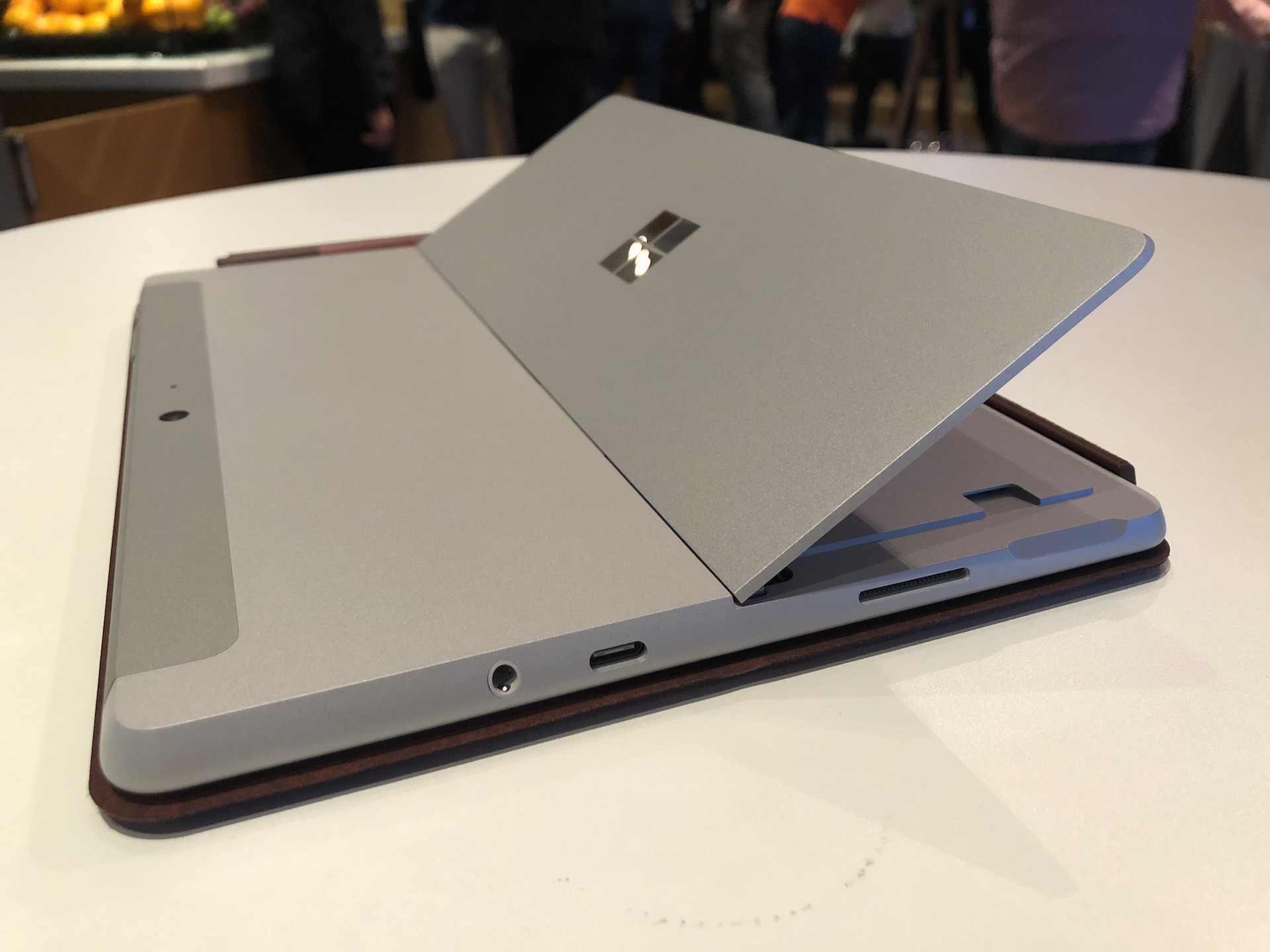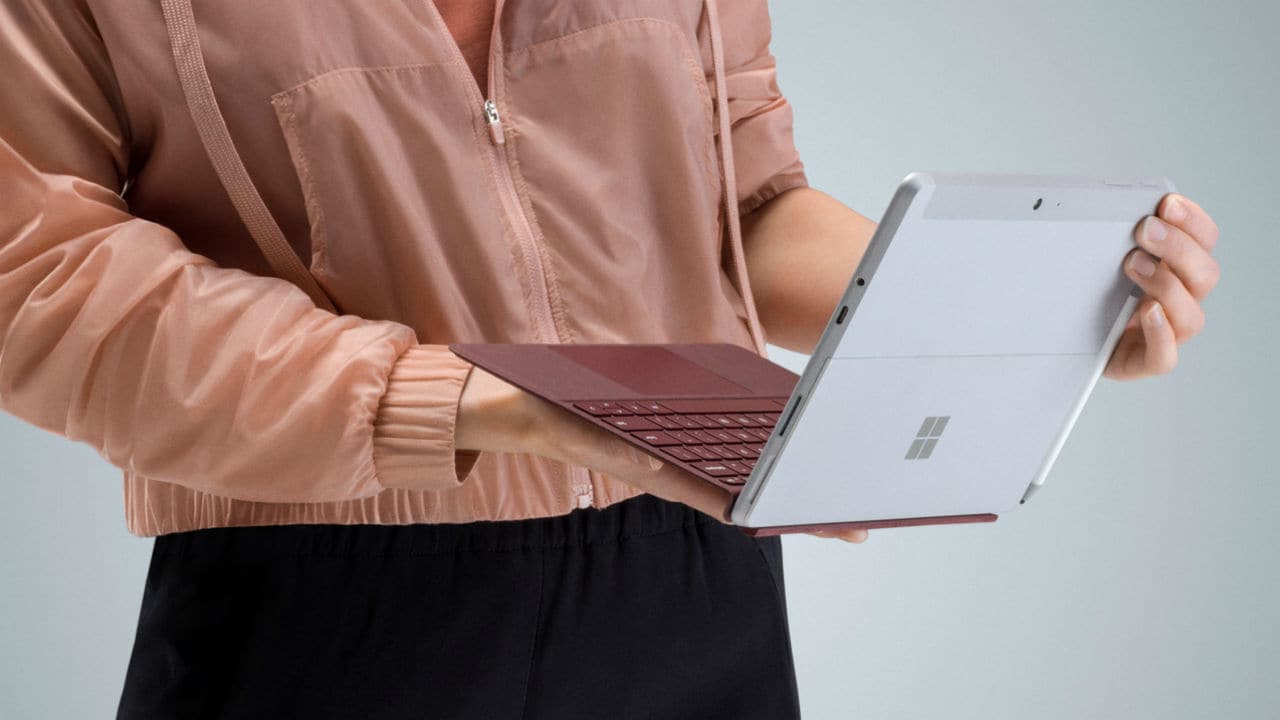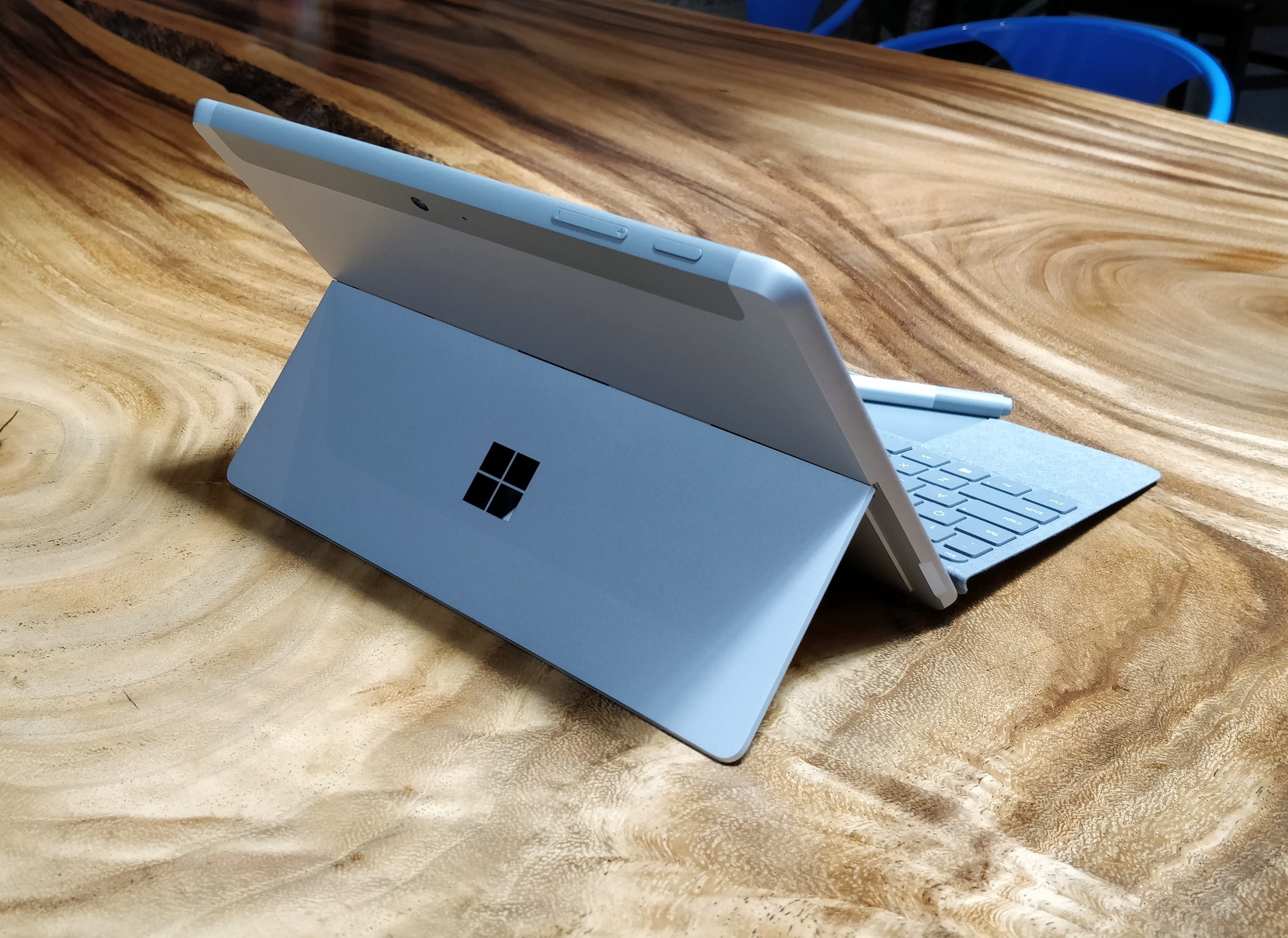

The Start menu is centrally placed and much more condensed. Much of the interface is more touch-friendly. There are some rough edges that need smoothing out, such as the inconsistent dark mode with bright-white dialogue boxes, but overall it fits better on the Go 3’s small screen than Windows 10. Windows 11 is brand new, and it feels it. The redesigned Start menu squeezes more icons into a smaller space, so it is a better fit for the 10.5in screen of the Go 3. Processor: dual-core Intel Pentium Gold 6500Y or 10th-gen Core i3Ĭamera: 8MP rear, 5MP front-facing, Windows HelloĬonnectivity: Wifi 6, Bluetooth 5, USB-C, Surface Connector, microSD, headphone socket Switching out Chrome for Microsoft’s Edge browser extended the battery by about an hour but that is still shorter than its predecessor. That’s with only a few tabs open in Chrome, using the Typora text editor and Evernote. Used for light work with recommended power settings and 70% screen brightness, it lasts only four hours.

Photograph: Samuel Gibbs/The Guardianīattery life is poor. Microsoft seems to agree, as you can't even find the 4GB model of the Surface Laptop Go 2 on Best Buy's website.Fully charging the tablet with the included 24W Surface Connect charger took more than three hours, reaching 50% in about an hour, which is slower than its predecessor.

Windows 11 has some features that use more resources, like the Widgets panel and Microsoft Teams integration, so 4GB of RAM is starting to be a little too low, even for a base configuration. With Windows 10, that was still double the minimum requirement for the OS, but with Windows 11, it just barely matches that minimum requirement. Microsoft's Go series is focused on offering more affordable experiences, and because of that, they've always featured 4GB of RAM in the base configuration. Again, this is more wishful thinking than it is a realistic expectation. In fact, the Surface Laptop Go 2's resolution is still below Full HD, and we hope Microsoft will aim a little higher with the next iteration. However, with the premium Surface Laptop series, it's only ever had 201 PPI, and the Surface Laptop Go 2 only has a low 148 PPI. With the Surface Pro lineup, Microsoft has always used extremely sharp screens considering their size, aiming for a pixel density of 267 PPI (pixels per inch). Something similar applies to the display.


 0 kommentar(er)
0 kommentar(er)
